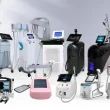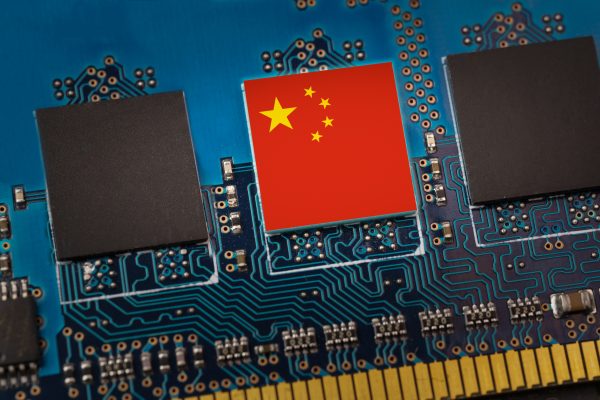Key Breakthrough: A Leap Forward for Chinese Chip Gear
Introduction: Meet the Author
Hello, I’m Li Wei, a tech journalist and blogger based in Shanghai. I have been covering the latest developments and trends in the semiconductor industry for over a decade. I have a keen interest in the innovations and challenges that Chinese chipmakers face in the global market.
In this article, I will share with you a key breakthrough that a Chinese chip equipment maker achieved recently, and what it means for China’s quest to become self-reliant in chip production. I will also compare the Chinese chip gear with its foreign counterparts, and offer some insights and tips for tech enthusiasts and investors.
What is Chinese Chip Gear and Why Does It Matter?
Chinese chip gear refers to the machines and tools that are used to manufacture semiconductor chips, which are the essential components of electronic devices such as smartphones, computers, and cars. Chip gear includes lithography machines, etching machines, deposition machines, testing machines, and more.
Chinese chip gear matters because it is vital for China’s ambition to reduce its dependence on foreign chip suppliers, especially after the US imposed sanctions on some of China’s leading chipmakers, such as Huawei and SMIC. The US sanctions have restricted China’s access to advanced chip technology and equipment, creating a bottleneck for China’s chip industry.
According to a report by IC Insights, China accounted for 15.9% of the global chip market in 2020, but only 5.9% of the global chip production. This means that China had to import most of the chips that it consumed, spending more than $300 billion on chip imports in 2020. To close this gap, China has been investing heavily in developing its own chip industry, including chip gear.
How Did Chinese Chip Gear Achieve a Key Breakthrough?
One of the key breakthroughs that Chinese chip gear achieved recently was announced by Shanghai Alliance Investment Ltd. (SAIL), a major state-backed shareholder of Shanghai Micro Electronics Equipment Group Co. (SMEE). SMEE is China’s leading chip equipment maker, and one of the few companies in the world that can produce lithography machines, which are the most critical and expensive machines in chip production.
SAIL said that SMEE had successfully developed a 28-nanometer immersion lithography machine, which can print circuit patterns on silicon wafers with a resolution of 28 nanometers. This is a significant improvement from SMEE’s previous 90-nanometer lithography machine, and a major step towards catching up with the global leaders in lithography, such as ASML, Nikon, and Canon.
SAIL also said that SMEE had delivered its first 28-nanometer immersion lithography machine to a domestic chipmaker, and that it had received orders for more than 10 machines from other customers. SAIL claimed that SMEE’s 28-nanometer immersion lithography machine had reached the international advanced level, and that it would help China break the monopoly of foreign chip equipment suppliers.

How Does Chinese Chip Gear Compare with Foreign Chip Gear?
While SMEE’s 28-nanometer immersion lithography machine is a remarkable achievement for Chinese chip gear, it is still far behind the foreign chip gear in terms of technology and performance. For comparison, ASML, the world’s largest lithography machine maker, has been producing 7-nanometer extreme ultraviolet (EUV) lithography machines, which can print circuit patterns with a resolution of 7 nanometers, since 2018. EUV lithography is considered the most advanced and cutting-edge technology in chip production, and ASML is the only company in the world that can produce EUV lithography machines.
Moreover, foreign chip gear makers have a dominant position in the global chip equipment market, with a combined market share of over 80%. According to a report by SEMI, the global association of the semiconductor industry, the top five chip equipment makers in 2020 were ASML, Applied Materials, Lam Research, Tokyo Electron, and KLA, all of which are based in the US, Europe, or Japan. SMEE ranked 16th in the global chip equipment market in 2020, with a market share of 1.2%.
The table below summarizes some of the key features and benefits of Chinese chip gear and foreign chip gear.
| Feature/Benefit | Chinese Chip Gear | Foreign Chip Gear |
|---|---|---|
| Technology Level | 28-nanometer immersion lithography | 7-nanometer EUV lithography |
| Resolution | 28 nanometers | 7 nanometers |
| Throughput | 60 wafers per hour | 170 wafers per hour |
| Price | $30 million per machine | $120 million per machine |
| Market Share | 1.2% | 80.4% |
| Customer Base | Domestic chipmakers | Global chipmakers |
What are the Prospects and Challenges for Chinese Chip Gear?
Despite the gap between Chinese chip gear and foreign chip gear, there are some positive prospects and opportunities for Chinese chip gear in the future. One of them is the growing demand for chip equipment from domestic chipmakers, who are eager to upgrade their production capacity and technology amid the US sanctions and the global chip shortage. According to a report by SEMI, China is expected to be the largest market for chip equipment in 2021, with a projected spending of $20.3 billion, up 20% from 2020.
Another prospect for Chinese chip gear is the support and investment from the Chinese government, which has made chip development a national priority and a strategic goal. The government has launched various policies and initiatives to foster the growth of the chip industry, such as the Made in China 2025 plan, the National Integrated Circuit Industry Development Guidelines, and the National Integrated Circuit Industry Investment Fund. These policies and initiatives aim to provide financial, policy, and infrastructure support for Chinese chipmakers and chip equipment makers, and to create a favorable environment for innovation and collaboration.
However, Chinese chip gear also faces some formidable challenges and risks in the future. One of them is the fierce competition and pressure from foreign chip equipment makers, who have a strong advantage in technology, experience, and reputation. Foreign chip equipment makers are also constantly innovating and improving their products and services, making it harder for Chinese chip gear to catch up or surpass them. Moreover, foreign chip equipment makers may face more restrictions or sanctions from the US government, which could limit their access to the Chinese market or their cooperation with Chinese chipmakers.
Another challenge for Chinese chip gear is the complexity and difficulty of chip equipment development, which requires a high level of expertise, talent, and resources. Chip equipment development involves multiple disciplines and fields, such as physics, chemistry, optics, mechanics, electronics, software, and more. It also requires a long and costly research and development process, which may take years or even decades to achieve a breakthrough. Furthermore, chip equipment development depends on the availability and quality of raw materials, components, and suppliers, which may be affected by external factors such as geopolitics, trade wars, or natural disasters.
Conclusion: What Can You Do as a Tech Enthusiast or Investor?
As a tech enthusiast or investor, you may be wondering what you can do to learn more about Chinese chip gear, or to benefit from its development. Here are some suggestions and tips for you:
- Follow the latest news and trends about Chinese chip gear and the semiconductor industry, such as the ones that I shared with you at the beginning of this article. You can use Bing search to find relevant and reliable sources of information, such as web articles, news articles, blogs, podcasts, videos, and more.
- Explore the products and services of Chinese chip equipment makers, such as SMEE, Naura, AMEC, and more. You can visit their official websites, social media accounts, or online platforms, and learn about their history, vision, mission, values, achievements, innovations, and future plans. You can also contact them directly or through their representatives, and ask them questions or provide feedback.
- Consider investing in Chinese chip equipment makers, if you are interested and qualified. You can research their financial performance, market position, growth potential, and risk factors, and compare them with their competitors and peers. You can also consult with professional advisors, analysts, or brokers, and follow their recommendations and guidance.
- Support and encourage Chinese chip equipment makers, if you are passionate and optimistic. You can share their stories and successes with your friends, family, colleagues, or online communities, and spread positive and constructive messages. You can also participate in their events, activities, or campaigns, and express your appreciation and recognition.
Thank you for reading this article. I hope you enjoyed it and learned something new and valuable. If you have any questions or feedback for me, please feel free to leave a comment below or contact me via email. I would love to hear from you and continue the conversation. Until next time, stay tuned and stay curious.












